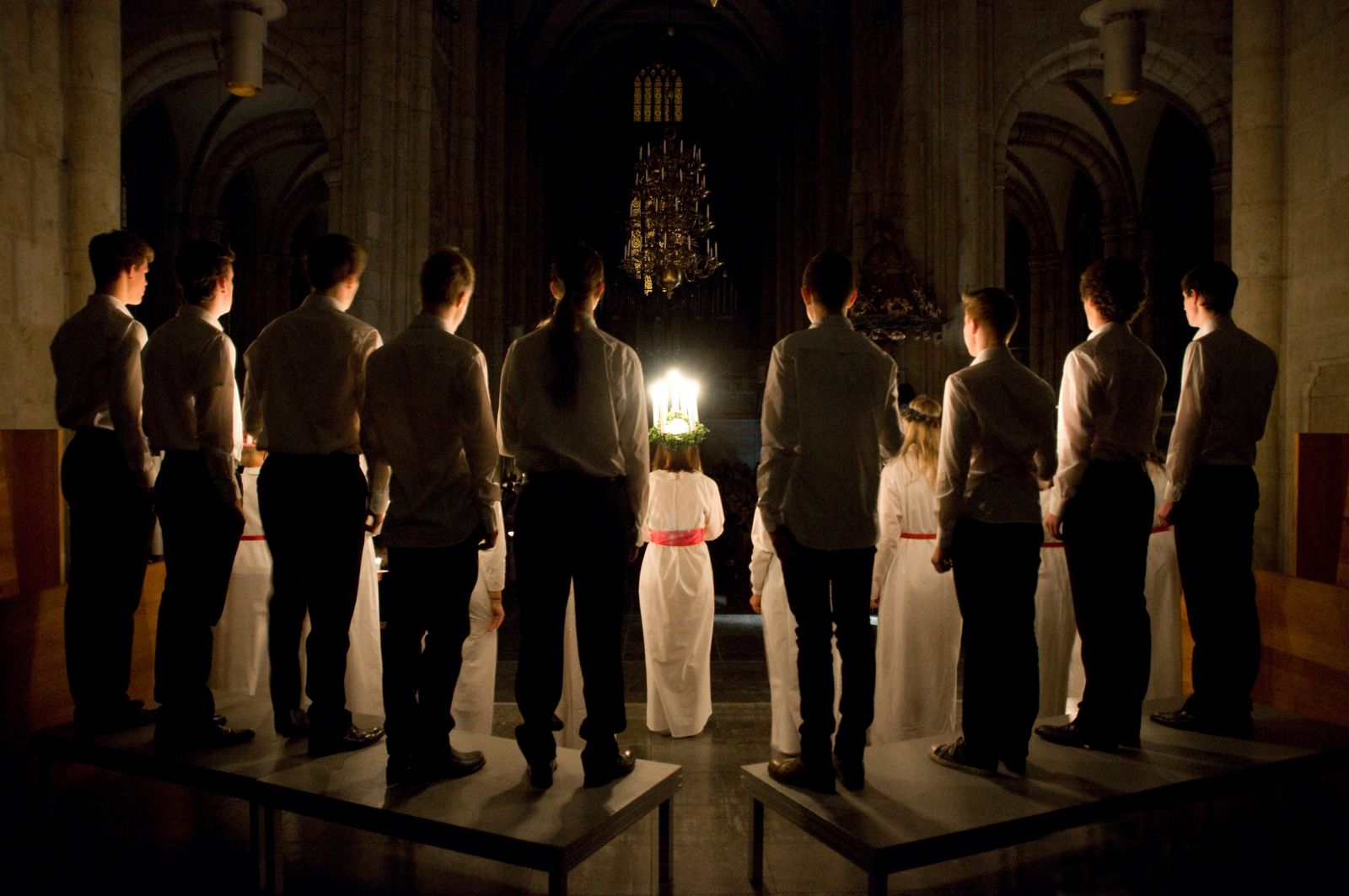 50 singers from Skara Cathedral in our Link Swedish diocese will perform a traditional service of light in Bradford Cathedral on Saturday night.
50 singers from Skara Cathedral in our Link Swedish diocese will perform a traditional service of light in Bradford Cathedral on Saturday night.
It celebrates St Lucia and in Sweden it coincides with the night between the 12th and the 13th of December - traditionally regarded as the longest night of the year and a night when extra protection was needed.
It was the custom in some parts of Sweden to prepare a meal and serve it under candlelight during that long and cold night. Swedes sometimes called it "att lussa”. Lusse referred to light, lux in Latin, luce or lucia in Italian.
The free concert begins at 7pm and there will be a retiring collection.
The choir is made up of singers from Skara Catheral Choir and its youth choir and the performance is born of the following story, as told by Lennart Sjöström, Dean and Rector of the Swedish Church in London:
"On December 13th A.D. 304, a young girl called Lucia died in Syracusa, Sicily.
She had refused to make a sacrifice to the emperor Diocletian and the punishment was death, martyrdom.
Legend asserts that Lucia, during her life, was willing to sacrifice even her eyes for her true belief. At the end she said: “I know of no other God than my Creator in Heaven and I am prepared to die for him”. Lucia is a symbol of light in darkness. Her body rests in the Church of St Jeremiah in Venice.
Her name and her story reached Sweden from Germany and England, where she is known as Lucy.
In the middle of the 19th century, Gunnar Wennerberg brought the Lucia song to Sweden from Naples, after a visit to Italy.
The song is about a little fishing port, Santa Lucia: Sul mare luccica l'astro d'argento. It was given a Swedish text and became very popular in Sweden. The modern way of celebrating Lucia was introduced by the Swedish newspaper Stockholmstidningen. They organised a contest and “crowned" their first Lucia in 1927.
Now the name “Lucia” has a special place in every Swede's heart. Lucia is celebrated in practically every home and Church, community and club, school and office.
Lucia appears, dressed in a white gown and with a crown of candles – with a group of girls also dressed in white. Sometimes young boys wearing tall paper cones with stars on them accompany her. They all sing the Lucia song and Christmas carols.
The many legends surrounding Lucia cannot alone explain why, in a Protestant country, the Catholic Saint Lucia has come to mean so much. I think that Santa Lucia is for us a symbol of blessed light needed by us all.
"The light shines in the darkness, and the darkness has not overcome it” (John 1.5). Santa Lucia reminds us of the greater light that is yet to come. The light we look forward to - the light of Christ. Jesus said: “I am the light of the world: those who follow me shall not walk in darkness, but shall have the light of life” (John 8.12). May this Lucia Celebration prepare us and inspire us to receive Christ and his light into our hearts this coming Christmas."